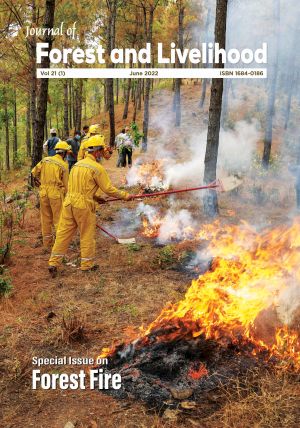Forest Fire Risk Assessment and Proposal for Fire Stations in different Geographical Regions of Central Nepal
DOI:
https://doi.org/10.3126/jfl.v21i1.56585Keywords:
Fire station, forest fire, Getis-Ord Gi, hotspot analysis, riskAbstract
Forest fire is considered as the most persistent terrestrial disturbance affecting ecosystems, natural resources and threats to human life. Nepal predominantly faces forest fires during dry seasons (November-June) with increasing trend in the recent years that need proper management interventions. In line to this, our paper aims at assessing fire risk zones in four districts of central Nepal representing different geographical characteristics, through hotspot analysis and further proposing potential fire stations. Data acquired from Visible Infrared Imaging Radiometer Suite (VIIRS) was projected through the Projected Coordinate System and integrated into ICOUNT for hotspot analysis using Neighbor Count Tool and Getis-Ord Gi* tool, Inverse Distance Weighted (IDW) technique and neighborhood function for proposing fire stations from ArcGIS. It was observed that hotspots and cold spots are demonstrated by points with the values 6.969622 > z > 0.926061 (red) and -1.705619 < z < -0.926060 (blue). Likewise, in terms of physiography, Chure zone has the highest concentration of hotspots followed by Terai whereas cold spots are mostly concentrated in the Hilly region. In order to mitigate the problem of forest fire, establishment of fire stations for the areas with road access is pertinent, while in areas with poor, or without road access, formation of Forest Fire Management Committee (FFMC) is recommended. These management interventions can serve as a milestone for prevention and control of forest fire in the days to come, for Nepal.
Downloads
Downloads
Published
How to Cite
Issue
Section
License

This work is licensed under a Creative Commons Attribution-NonCommercial 4.0 International License.
CC-BY-NC: This license allows reusers to distribute, remix, adapt, and build upon the material in any medium or format for noncommercial purposes only, and only so long as attribution is given to the creator.





